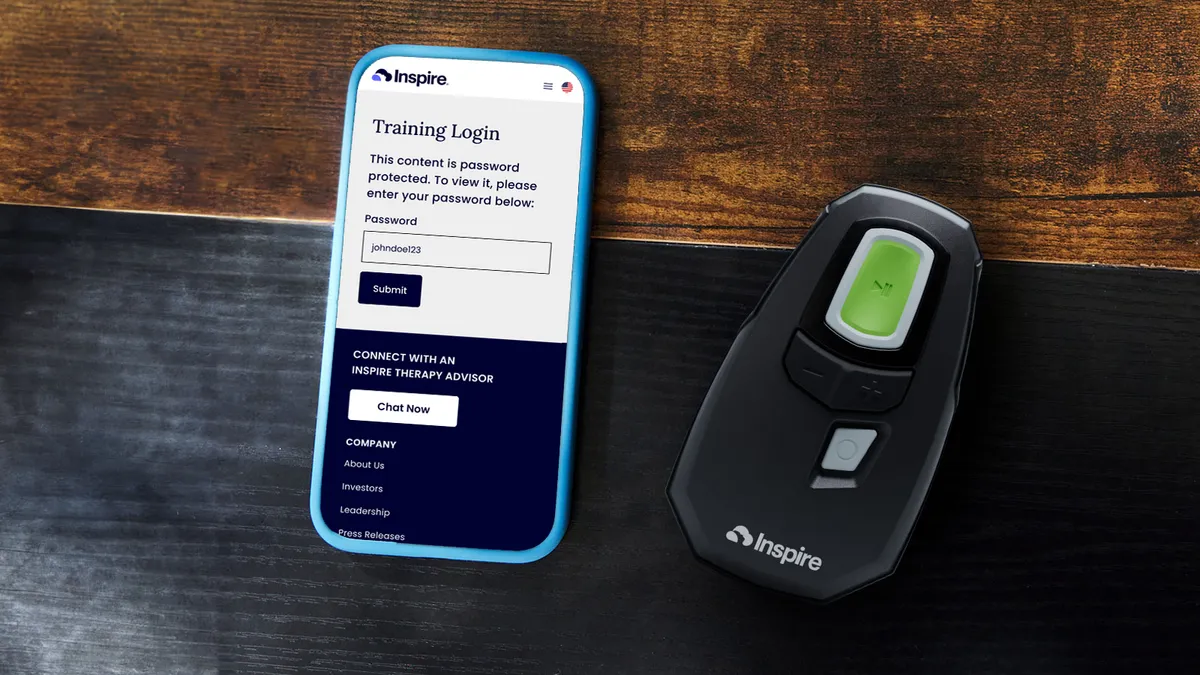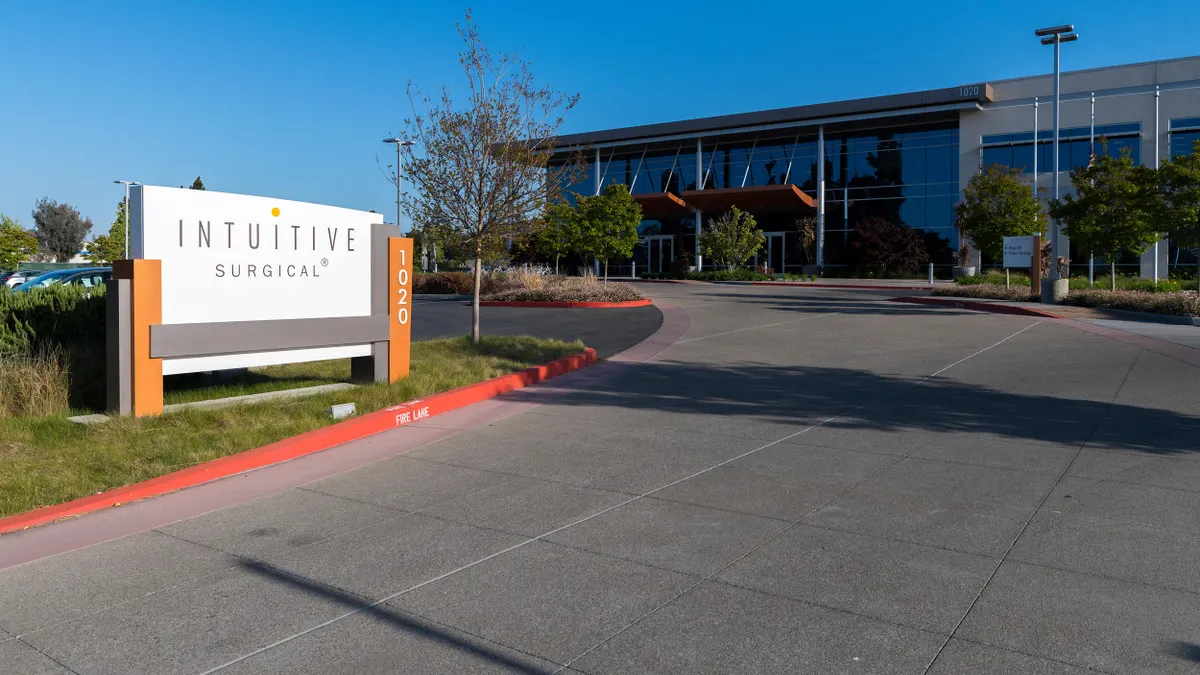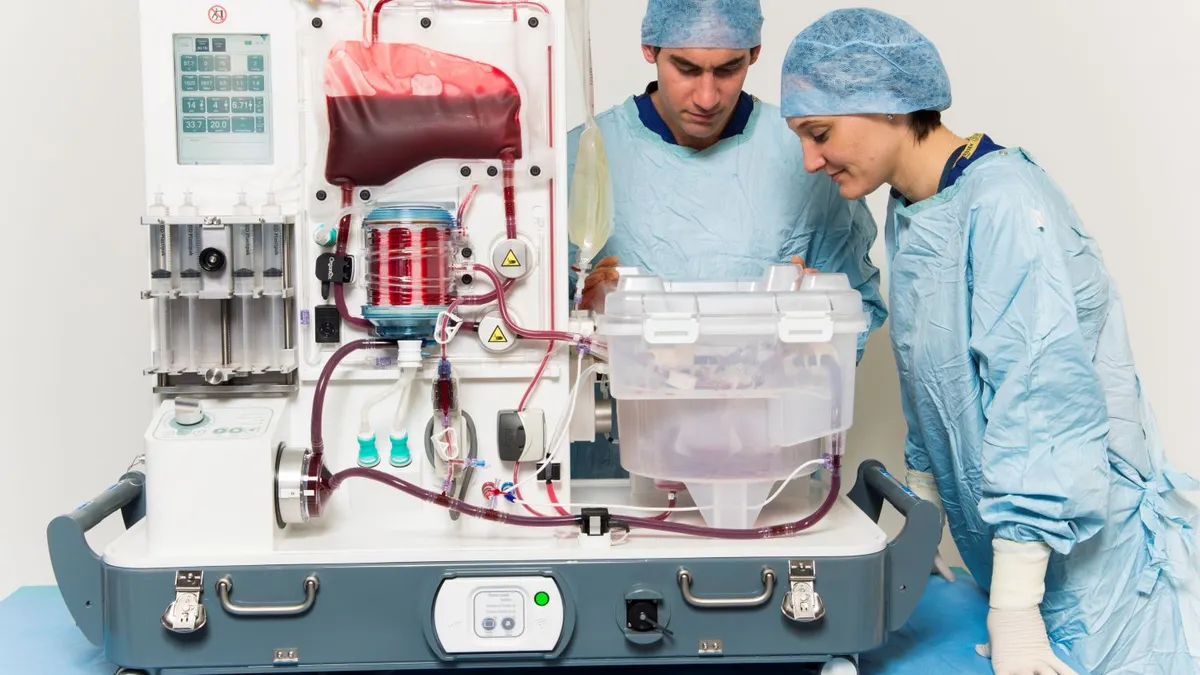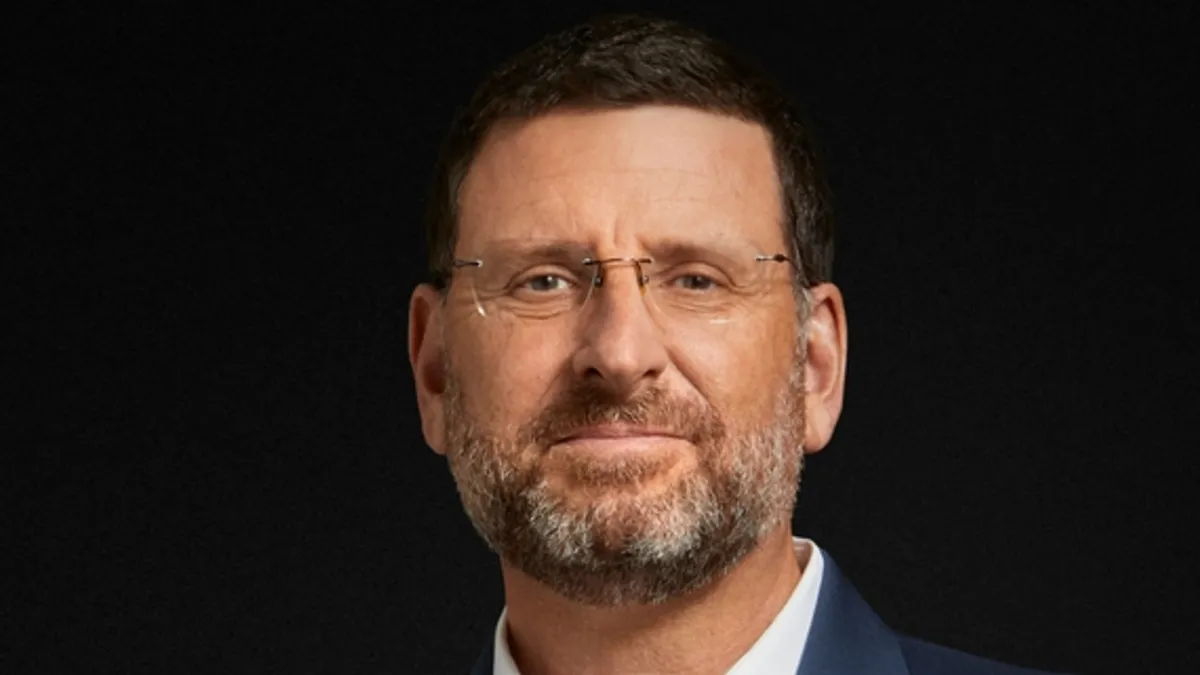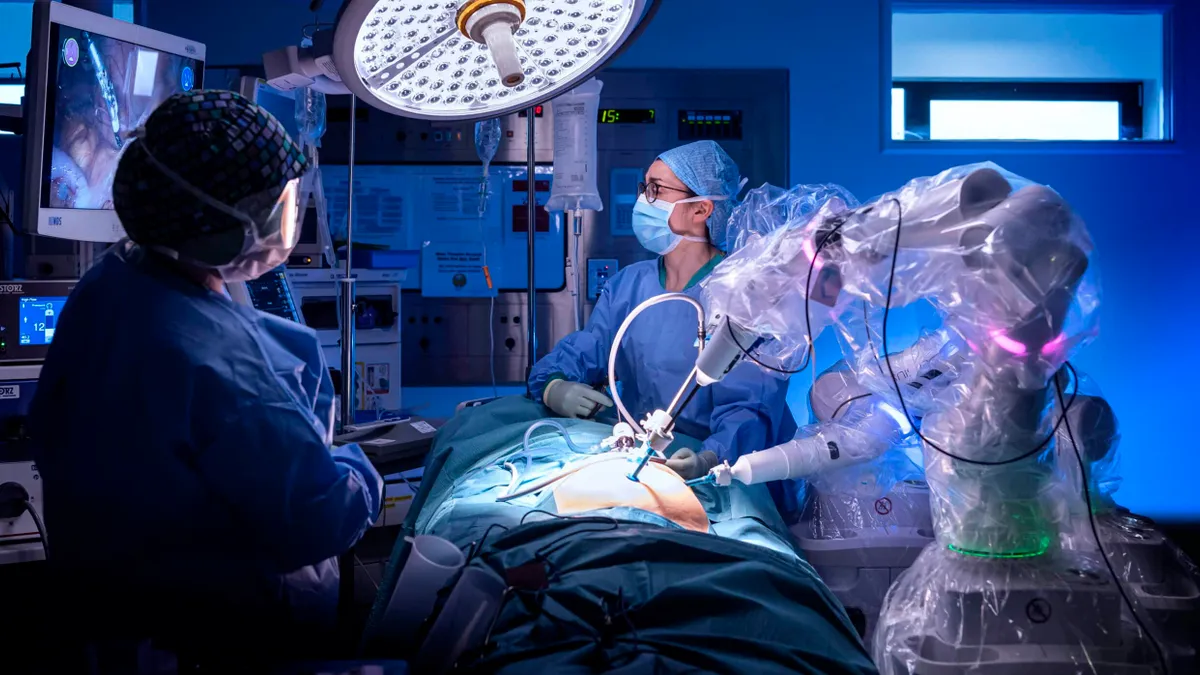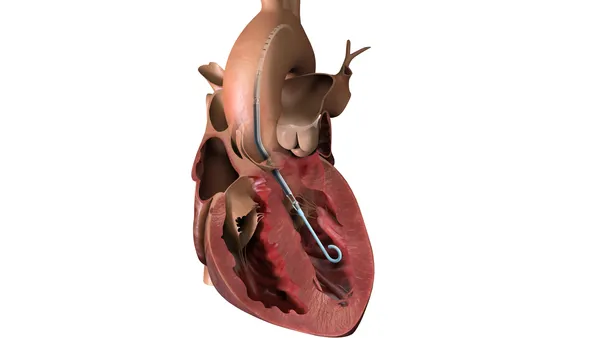Moon Surgical is aiming to establish a foothold in the soft tissue robotic surgery market long dominated by Intuitive Surgical’s da Vinci system.
Backed by Johnson & Johnson’s JJDC venture capital arm and AI chip leader Nvidia, and with a board chaired by Intuitive co-founder Frederic Moll, Moon is closing in on its mission. The company, with offices in Paris and California, received a CE mark for the commercial version of its Maestro robot in September and is anticipating FDA approval in the next few months, according to CEO Anne Osdoit.
MedTech Dive recently spoke with Osdoit, a biomedical engineer by training and partner in venture capital firm Sofinnova Partners, about readying the robot for a U.S. launch and the opportunities in soft tissue surgery.
This interview has been edited for length and clarity.
MEDTECH DIVE: How is your robot different from market incumbent Intuitive’s da Vinci?
ANNE OSDOIT: What robots have been doing — and specifically the da Vinci robot, which is really the main player in the space — is they've designed a number of arms to hold all these instruments, and then they brought the surgeon behind the console, basically in a corner of the room out of the sterile field. Through that console, the surgeon is able to maneuver with the different instruments that are held by those arms.
What we've done at Moon is different. We basically kept the surgeon at the center of the operating room next to the patient, and we've kept the surgeons’ two arms, because the surgeons are trained and they're great and they're proficient and have two functional arms.
But we've added to that. We've enhanced the surgeon with an extra set of arms at the bedside that are holding two of the instruments for him and maneuvering them for him in a smart and autonomous way. And what that means is we have a system that is a lot more integrated into the correct way of doing things.
We're not changing the way the surgeon needs to be trained. We're not changing the instruments the surgeon is using. We are a system that is a lot smaller in terms of footprint and can be used in pretty much any operating room. And so we can serve the patient better. The surgeon is happier. They can control everything, but without being remote, and they can maintain their workflow and their efficiency while benefiting from the robotic attributes that they like.
How does the surgeon use the robotic arms?
Either directly controlled by the surgeon or autonomously maneuvered. The surgeon would grab an instrument held by the robot and move it somewhere manually and go. So, that's one way. And the second way is they can be manipulated autonomously. With artificial intelligence, you can tell the scope to follow what the surgeon is doing, so that what's seen on the screen is always relevant and focused on the surgeon's own instruments. And similarly, our second arm typically exposes tissue of interest for the surgeon. The second arm can manage that exposure in a smart way.
When do you expect to launch the Maestro robot in the U.S.?
We do have both FDA clearance and CE mark on an initial version of the system, which is not a commercial version. And then on our second generation system, we have the CE mark, and we are expecting an FDA clearance in the next few months. That's the new system, the one where we can scale. And the plan beyond that is to do a limited market release in the United States next year, ahead of the larger commercial launch in 2025.
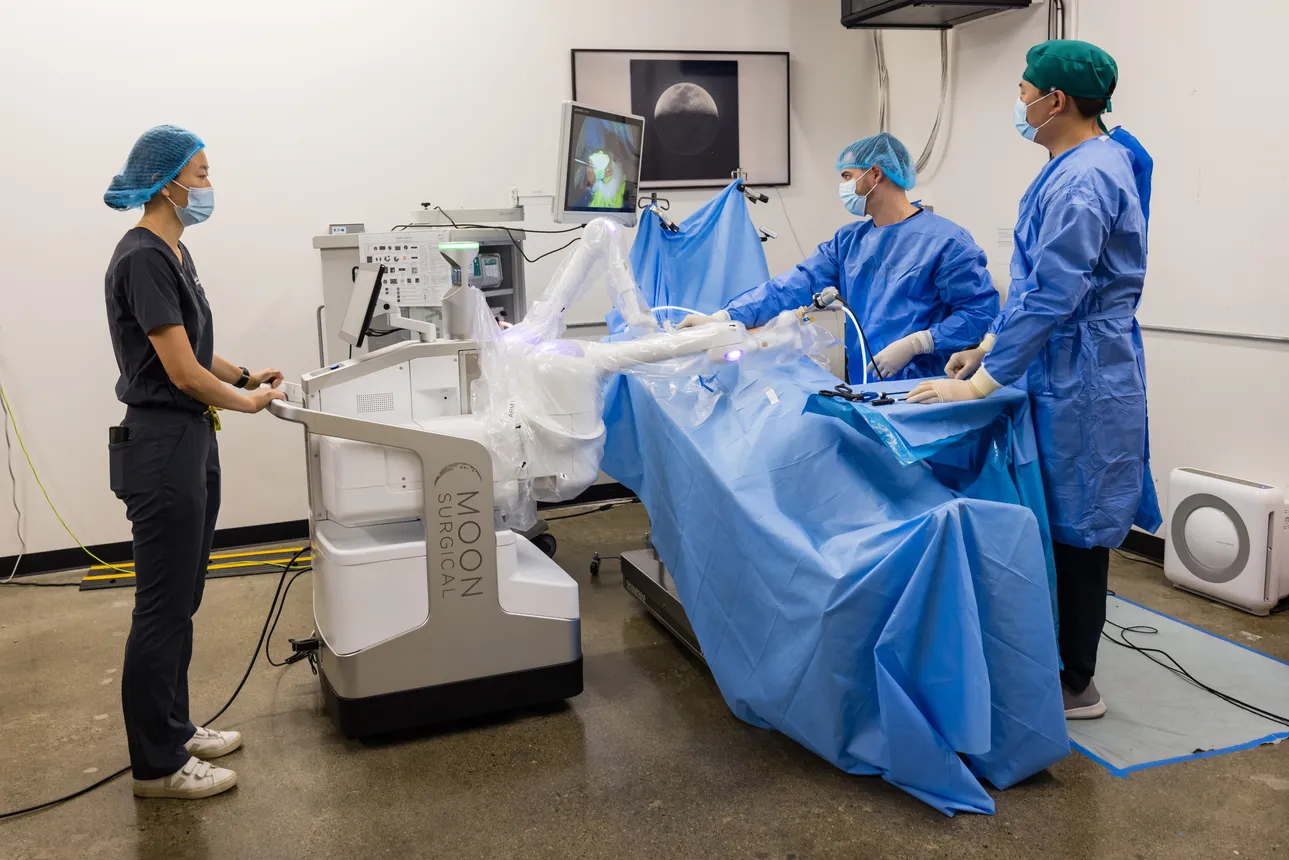
What procedures did you design your system for?
We’re not directly competing against da Vinci. Da Vinci is an incredible product for what it does, and what it does well, which is to provide support to surgeons in these rather complex surgical procedures where there's a need to do fine suturing in a very narrow environment, prostate surgery being the main example there. It's also a fantastic system to use in settings where the size of the room is not an issue, and the number of people supporting the case is not an issue.
What we're seeing is that the vast majority of laparoscopy surgeries today are not done with the da Vinci robots, and there's probably not a future where there's a da Vinci robot in every single one of these operating rooms.
There are about 30,000 operating rooms in the U.S. doing laparoscopy, but only 4,800 of those rooms have a da Vinci system. And so we've developed a system that provides some of these robotic attributes for basically the rest of the market: the 94% of patients undergoing soft tissue surgery where no robot is being used.
These would be patients that get operated on in the ambulatory setting on procedures that are typically a lot less complex: gallbladder removals, hernia repairs, appendectomies, bariatric surgery, reflux surgery – non-cancerous cases that do not require these massive complex platforms. We feel that we can enhance the existing practice a lot without the expense, the complexity and the cost of a larger platform.
Will providers see a cost advantage to your system?
Cost is, of course, an important limiting factor in the adoption of robots. But besides the cost, it's also the business model. When you go into the settings of ambulatory surgery centers or hospital outpatient departments, these are facilities and providers where the barrier to entry represented by a large acquisition of a complex piece of capital equipment is huge.
And so we've worked on a subscription-based model that is indexed on volume tiers, basically three different tiers, and you will pay a monthly fee based on which tier you fall into. It's this one lump sum that covers everything: the system, the disposables, the service. It makes it extremely simple for them to gain access to the technology and replenish their disposables when they’re using them.
A lot of hospitals operate at a deficit, a lot of hospitals have staff shortages. We're helping providers with a system that can assist the surgeon in a way that also improves their efficiency.
Why are we seeing so many companies, large and small, vying to build new surgical robots?
I would say if people have been following Intuitive Surgical — and its outstanding success — you know they've created the market. I mean, surgeons love robots. They love the control and the confidence that it provides. It's attractive to patients. So, people recognize this as an opportunity to be a fast follower or maybe not-so-fast follower.
There have been a number of companies essentially chasing that market and trying to develop different variants of what a da Vinci robot could look like.
That's one piece. And then I think the other part of the market is orthopedics. Orthopedics has had deep penetration and adoption in the ambulatory setting. A lot of ASCs today are owned by orthopedic surgeons, and they recognize the benefits of using robots for placing hip or knee implants, specifically, or spine.
Seeing the adoption of these robots has generated a whole lot of second- or third-generation approaches and companies that are trying to enter the markets.






